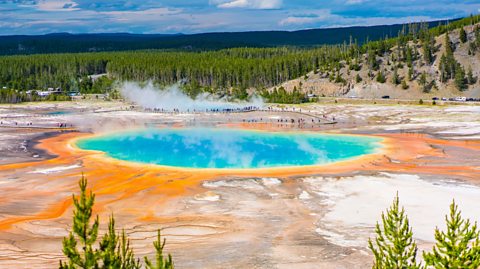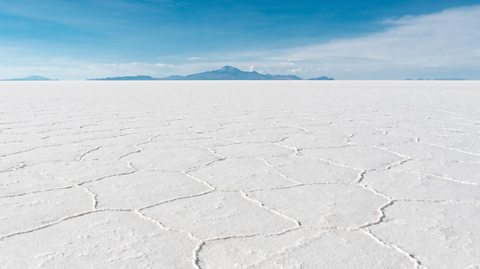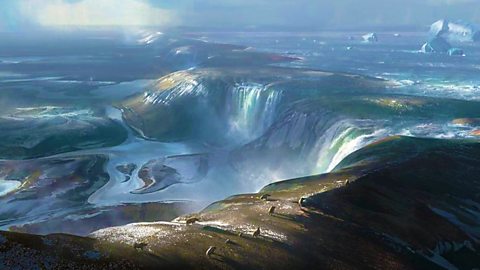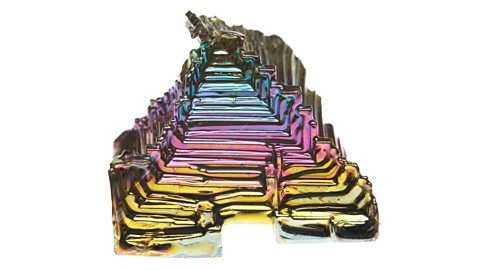These beautiful landmarks will rock your world!
Our planet is covered in gorgeous flora and fauna, from the very tip of the North Pole to the southernmost point of the Americas. But the very foundation of our planet can form some spectacular landscapes too.
Here are some of the most awesome geological wonders from around the world.
Cenotes - Yucatán peninsula, Mexico

Cenotes (pronounced seh-noh-teys) are essentially huge sinkholes in the ground, filled with water. While they are now incredibly popular tourist attractions, their tale began over two million years ago.
The Yucatán peninsula (which covers parts of Mexico, Belize and Guatemala) is a porous platform mainly made of limestone. Over time, rain trickled through the stone and dissolved it, forming large underground caves. Water from the rain and the sea flooded in, until the sea level dropped and the caves were left empty. Mineral deposits formed in these moist caves, creating stalagmites and stalactites.
When the sea levels rose, water flooded back in, eroding the caves more. Eventually the roofs collapsed, leaving behind the large cenotes we can see today.
While we now know how they came about, back in the days of the Ancient Maya these huge sinkholes were understandably very mysterious. They were viewed as entrances to the underworld, and they would leave offerings to the gods in the form of jewellery, pottery, and sometimes even human sacrifices.
Fumaroles - Yellowstone National Park, Wyoming, USA

Fumaroles (pronounced fyoo-mah-rolls) are the Earth’s ventilation shafts. They are pockets in the Earth’s crust where steam and volcanic gases are released. Magma lying near the Earth’s surface heats ground water, which creates the steam, and the chemicals carbon dioxide, sulphur dioxide, and hydrogen sulphide are usually emitted directly from the magma.
Fumaroles can sometimes turn into hot springs if water rises to the surface. One place in the world with lots of both is Yellowstone National Park in the USA. It's home to the Grand Prismatic hot spring, which is the third largest in the world. Known for its incredible colours (created by the chemicals released from the magma), it brings tourists from across the world. But caution is very much needed if you fancy a trip – it sits on top of an active volcano.
Giant’s Causeway - County Antrim, Northern Ireland

These rocks have one legendary tale to tell.
The official line is that the roughly 40,000 black basalt columns at the Northern Irish National Trust site were the result of volcanic activity, as lava creeping down to the coast cooled when in contact with the sea millions of years ago.
However, legend has it that giant Finn McCool (also known as Fionn Mac Cumhaill) guarded the local coastline. When threatened from across the sea by another giant called Benandonner, Finn fought back by throwing basalt rocks into the sea to create stepping stones, and marched over to Scotland to tell Benandonner what’s what.
Unfortunately, Finn quickly realised that Ben was much, much larger than he was. So, upon seeing the enemy giant towering above him, Finn ran back home, but Ben followed. Finn was understandably worried, but his wife Oonagh had a plan. When Ben arrived, she introduced him to their baby, who was HUGE. Frightened at how big the father might be if the baby was that large, Ben swiftly turned on his heel and ran back home to Scotland. As he ran, he tore up as much of the bridge as he could, only leaving behind the columns you can see today.
If only Ben had known that the baby was just Finn in disguise!
Uyuni salt flats - Uyuni, Bolivia

This huge white platform can be found in the area where the Andes mountain range is at its widest. It's called the Altiplano. It's 11,995 feet (3,656 metres) above sea level, and covers more than 10,000 square kilometres. Although there are some other pretty big salt flats across the globe - for example in Utah, USA - Bolivia’s is the largest in the world.
When there’s not very much wind, a thin layer of water on top of the vast expanse of white salt creates a huge mirror, reflecting the sky.
Salt flats form when large expanses of water evaporate very quickly. If bodies of water dry up faster than rain can replenish them, salt and other minerals left behind will form solid layers. And ta-da - the best place to season your chippy tea (in moderation!) is born.
Stone forest - Kunming, China

These can be found in lots of different places, like Bulgaria, Madagascar and Malaysia, but arguably the most famous is in Kunming, China. These clusters of imposing, razor sharp monoliths look like something out of a fantasy novel, but scientists at New York University found that they form in actually quite a simple way. How did they work this out? By using sticks of rock, the sweets you can get at the seaside!
Stone forests form when rock is submerged by water, and come to the surface when that water recedes. No one was quite sure why they eroded to be so sharp without complicated flows of water, until one group of scientists decided to see what would happen if they put a stick of rock, which is cylindrical in shape, in a tank of water for a while. They found that rather than it becoming smaller but largely staying the same shape, it also eventually became sharp and pointy.
They worked out that this was happening because the sugar that initially dissolved made the surrounding water heavier, which sunk quickly and therefore eroded the sweet in that way. A similar process happened with the stone forests.
This article was published in November 2021.
What is Britain made of?
Test your geological knowledge of the UK in our quiz

How did Britain become an island?
The UK has left the European continent more than once.

The most weird and wonderful elements in the periodic table
Which element was used to create a reusable laxative? Find out here.
